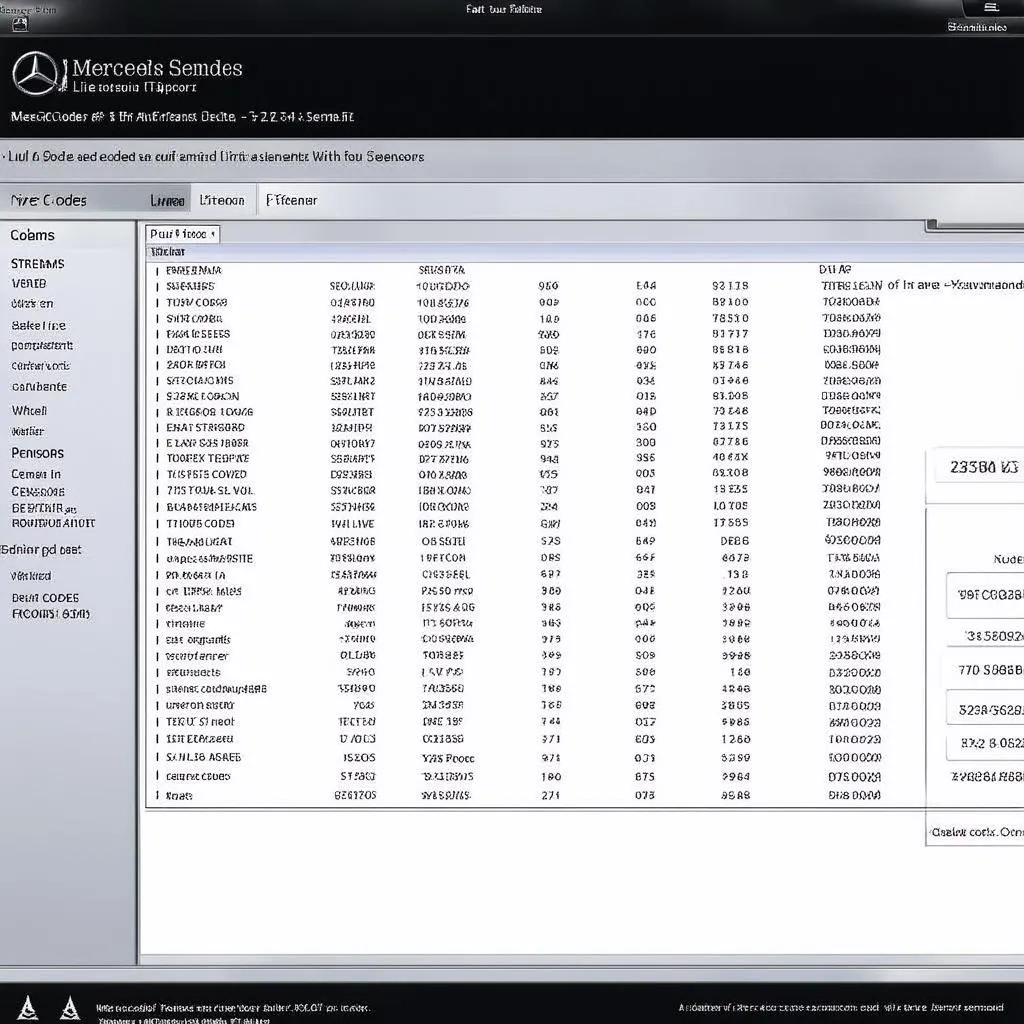A malfunctioning car seat can quickly turn a luxurious drive into an uncomfortable experience. This is especially true for Mercedes-Benz owners who expect the best in comfort and performance. If you’re struggling with a stubborn seat that refuses to budge, you’re in the right place. This comprehensive guide will walk you through the common causes of Mercedes seat adjustment problems and provide you with a clear roadmap to get your seat back on track.
Understanding the Culprit: Common Causes of Seat Adjustment Issues
Before diving into the solutions, it’s essential to understand the root of the problem. Here are the usual suspects behind Mercedes seat adjustment malfunctions:
- Faulty Seat Switch: The most common culprit is often a worn-out or broken seat adjustment switch. Years of use can wear down the internal contacts, leading to a faulty connection.
- Blown Fuse: A blown fuse in the seat adjustment circuit can completely cut off power to the system, rendering your controls useless.
- Wiring Problems: Loose or damaged wiring within the seat or along the power supply line can disrupt the flow of electricity, causing intermittent or complete failure of the seat adjustment system.
- Seat Motor Failure: The seat adjustment motor is responsible for moving the seat according to your input. Over time, these motors can wear out, leading to slow, jerky, or no movement at all.
- Control Module Malfunction: In some cases, the issue might lie within the seat control module, which is responsible for receiving signals from the switches and controlling the seat motors.
mercedes-seat-adjustment-switch|Mercedes Seat Adjustment Switch|Close-up image of a Mercedes-Benz seat adjustment switch, showing signs of wear and tear.
Recognizing the Signs: How to Identify Seat Adjustment Problems
Identifying the specific problem with your Mercedes seat adjustment requires paying attention to the symptoms:
- No Response from the Switch: If pressing the seat adjustment switch yields no response whatsoever, it could indicate a blown fuse, faulty switch, or wiring problem.
- Intermittent Operation: If the seat adjustment works sporadically or only in certain directions, it might point towards loose wiring or a failing seat motor.
- Slow or Jerky Movement: A slow or jerky seat movement often suggests a failing seat motor that’s struggling to function correctly.
- Clicking Sounds: Unusual clicking sounds emanating from the seat while operating the controls can be a telltale sign of a failing motor or a mechanical obstruction.
Gearing Up for the Fix: Essential Tools and Preparation
Before starting any repair work, gather the following tools and materials:
- Basic Hand Tools: A set of screwdrivers (Phillips and flathead), pliers, and a socket set will be sufficient for most repairs.
- Multimeter: A multimeter is crucial for testing the continuity of fuses, switches, and wiring.
- Replacement Parts: Depending on the diagnosed problem, you might need replacement parts such as a new seat switch, fuse, or even a seat motor. It’s best to purchase genuine Mercedes parts for optimal compatibility and longevity.
car-seat-motor|Car Seat Motor|Image of a car seat motor, with its wiring harness and mounting points visible.
Reclaiming Your Comfort: Step-by-Step Repair Guide
Once you’ve identified the likely cause and gathered the necessary tools, follow these steps to fix your Mercedes seat adjustment problem:
1. Checking the Fuses
Begin by checking the fuse box located either in the engine bay or inside the vehicle’s cabin. Consult your owner’s manual for the fuse box location and the specific fuse related to the seat adjustment system. Use the multimeter to check the fuse for continuity. If the fuse is blown, replace it with a new one of the same amperage.
2. Inspecting the Seat Switch
If the fuses are intact, the next step is to inspect the seat adjustment switch. Carefully remove the switch from the door panel or center console using a flathead screwdriver or a trim removal tool. Visually inspect the switch for any signs of damage or wear. You can also test the switch’s continuity using a multimeter. If the switch is faulty, replace it with a new one.
3. Examining the Wiring
If both the fuse and the switch check out, it’s time to inspect the wiring. This step might require removing some trim panels to access the wiring harness leading to the seat. Look for any loose connections, broken wires, or signs of corrosion. Repair any damaged wires and secure any loose connections.
car-wiring-harness|Car Wiring Harness|Detailed image of a car wiring harness, highlighting a loose connection that could cause electrical problems.
4. Testing the Seat Motor
If the wiring appears to be in good condition, the seat motor might be the culprit. Locate the seat motor under the seat and disconnect the wiring harness. Use a multimeter to test the motor’s resistance. If the motor shows no resistance or an extremely high resistance, it needs replacement.
5. Seeking Professional Help
If you’ve exhausted all these steps and your Mercedes seat adjustment is still acting up, it’s best to seek professional help. A qualified mechanic or an authorized Mercedes-Benz service center can diagnose and fix more complex issues, such as a faulty control module, that require specialized equipment and expertise.
Frequently Asked Questions about Mercedes Seat Adjustment Problems
Q: Can I drive my Mercedes with a faulty seat adjustment?
A: While technically possible, driving with a malfunctioning seat adjustment can be uncomfortable and potentially unsafe. A stuck seat can hinder your ability to reach the pedals and steering wheel properly, compromising your control of the vehicle.
Q: Are Mercedes seat adjustment problems expensive to fix?
A: The cost of repair can vary significantly depending on the underlying cause. A simple fuse replacement can cost a few dollars, while a new seat motor could set you back several hundred dollars.
Q: Can Cardiagtech software help diagnose Mercedes seat adjustment problems?
A: While CARDIAGTECH software primarily focuses on engine and transmission diagnostics, it may not be able to diagnose seat adjustment issues directly. However, it can be helpful in ruling out any related electrical problems within the vehicle’s system. For specific seat adjustment diagnostics, consult a qualified mechanic or an authorized Mercedes-Benz service center. You can learn more about CARDIAGTECH software and its capabilities on our website at https://cardiagtech.com/software-mercedes/.
Reclaim Your Driving Comfort
A malfunctioning seat adjustment system doesn’t have to be a permanent setback. By following the troubleshooting steps outlined in this guide, you can identify the root cause of the problem and potentially fix it yourself. Remember, if you encounter any difficulties or are unsure about a particular step, don’t hesitate to seek professional help. After all, a comfortable and enjoyable driving experience is worth the effort. For more insightful articles and tips on Mercedes-Benz maintenance and repair, explore our other resources on https://cardiagtech.com/.


